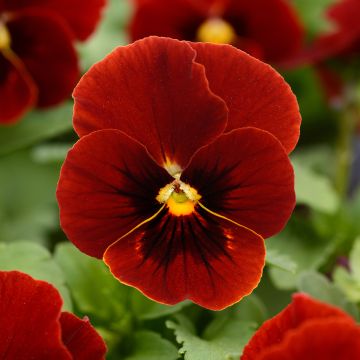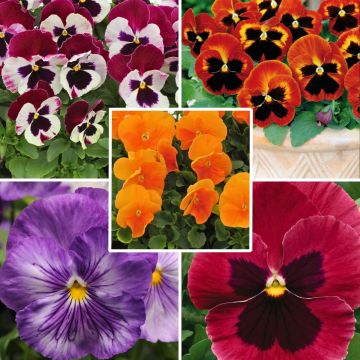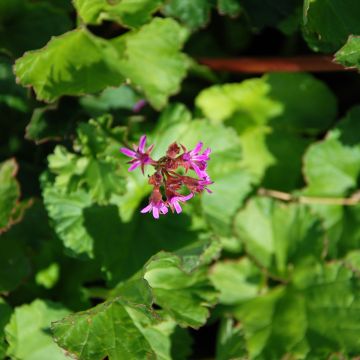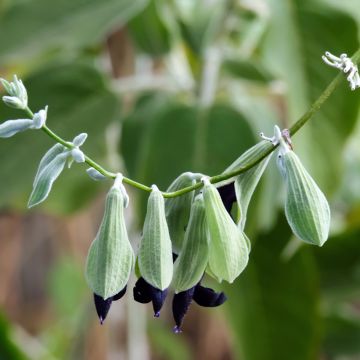Shipping country and language
Your country of residence may be:
Your country of residence is:
For a better user experience on our website, you can select:
Your shipping country:
Andorra
Austria
Belgium
Bulgaria
Canada
Chile
Croatia
Cyprus
Czechia
Denmark
Estonia
Finland
France
Germany
Greece
Hungary
Iceland
Ireland
Italy
Latvia
Lithuania
Luxembourg
Malta
Monaco
Netherlands
Poland
Portugal
Romania
Slovakia
Slovenia
Spain
Sweden
Switzerland
United Kingdom
We only deliver seed and bulb products to your country. If you add other products to your basket, they cannot be shipped.
Language:
French
German
Spanish
English
My Account
Hello
My wish lists
Plantfit
Log in / Register
Existing customer?
New customer?
Create an account to track your orders, access our customer service and, if you wish, make the most of our upcoming offers.


Pensée à grandes fleurs Ruffles Purple White Rim - Viola (x) wittrockiana
Viola x wittrockiana Ruffles Purple White Rim - Pansy
Viola x wittrockiana Ruffles Purple White Rim
Garden pansy
I was very disappointed..none of them flowered. I contacted customer service who, after seeing the photos, agreed to refund me half of the amount of my order. But I would have preferred to have beautiful flowers...I will not reorder from them. Sorry.
Kiki4064, 03/04/2024
Order in the next for dispatch today!
Dispatch by letter from €3.90.
Delivery charge from €5.90 Oversize package delivery charge from €6.90.
More information
This item is not available in your country.
Schedule delivery date,
and select date in basket
This plant carries a 6 months recovery warranty
More information
We guarantee the quality of our plants for a full growing cycle, and will replace at our expense any plant that fails to recover under normal climatic and planting conditions.
From €5.90 for pickup delivery and €6.90 for home delivery
Express home delivery from €8.90.
Does this plant fit my garden?
Set up your Plantfit profile →
Description
Viola 'Ruffles Purple White Rim' is a stunning hybrid with large double flowers in contrasting and bicolour frilly corollas. This pansy possesses a charm that is both old-fashioned and luxurious. This selection also exhibits good resistance to heat and snow. The flowering lasts for weeks, especially in spring, on compact and well-branched plants. A star of flower boxes, it is a perfect little plant for brightening up gardens and balconies. Plant your pansies in rich and moist soil, in a sunny or semi-shaded location.
Garden pansies, sometimes called Swiss giant pansies, are hybrids grouped under Viola x wittrockiana. They belong to the Violaceae family and are most often cultivated as annuals or biennials, although they are theoretically short-lived perennials. The 'Ruffles Purple White Rim' variety, developed in Germany, produces well-branched plants that quickly form compact clumps, reaching a height of 15 to 20cm (6 to 8in) and a width of 20cm (8in). They flower early, from November-December to May. The fully open 6 to 8cm (2 to 3in) wide flowers display numerous petals with highly undulated edges. The upper side of the petals is as distinct as the lower side, so that the softer or warmer shades of each side blend together, creating a gentle effect. The colour palette includes purple-violet, black, mauve, and white, all enhanced by a bright yellow centre.
Pansies are wonderful in the garden, but they also work beautifully in a pot on a windowsill to be enjoyed up close. They look perfect alongside primroses, wallflowers, grape hyacinths, and daisies. They even work well with grasses like Japanese sedge for a sculptural effect in a contemporary style. The bluish-green of glaucous fescues also highlights them well.
Pansy petals are edible, and their colours will bring a touch of originality to salads and pastries. For this use, think of growing them as you would grow your vegetables, in the most natural way possible.
Please be aware that our plug plants are professional products intended for experienced gardeners. Upon receipt, transplant them as soon as possible in pots and containers, or directly in flower beds.
Flowering
Foliage
Plant habit
Botanical data
Viola
x wittrockiana
Ruffles Purple White Rim
Violaceae
Garden pansy
Cultivar or hybrid
Other Pansies and violas
Planting and care
Pansies thrive in humus-rich, neutral to acidic, moist and fertile soil. A quality horticultural compost will be very suitable. They appreciate a sunny or semi-shaded exposure. They are fast-growing and produce an abundance of blooms, making them hungry plants. They need to be fed with a liquid plant food for containers once or twice a week during the growth period. Water regularly but without excess. Regularly remove faded flowers to encourage new blooms.
Planting period
Intended location
Care
- , onOrder confirmed
Reply from on Promesse de fleurs
Plug plants - Annuals
Haven't found what you were looking for?
Hardiness is the lowest winter temperature a plant can endure without suffering serious damage or even dying. However, hardiness is affected by location (a sheltered area, such as a patio), protection (winter cover) and soil type (hardiness is improved by well-drained soil).

Photo Sharing Terms & Conditions
In order to encourage gardeners to interact and share their experiences, Promesse de fleurs offers various media enabling content to be uploaded onto its Site - in particular via the ‘Photo sharing’ module.
The User agrees to refrain from:
- Posting any content that is illegal, prejudicial, insulting, racist, inciteful to hatred, revisionist, contrary to public decency, that infringes on privacy or on the privacy rights of third parties, in particular the publicity rights of persons and goods, intellectual property rights, or the right to privacy.
- Submitting content on behalf of a third party;
- Impersonate the identity of a third party and/or publish any personal information about a third party;
In general, the User undertakes to refrain from any unethical behaviour.
All Content (in particular text, comments, files, images, photos, videos, creative works, etc.), which may be subject to property or intellectual property rights, image or other private rights, shall remain the property of the User, subject to the limited rights granted by the terms of the licence granted by Promesse de fleurs as stated below. Users are at liberty to publish or not to publish such Content on the Site, notably via the ‘Photo Sharing’ facility, and accept that this Content shall be made public and freely accessible, notably on the Internet.
Users further acknowledge, undertake to have ,and guarantee that they hold all necessary rights and permissions to publish such material on the Site, in particular with regard to the legislation in force pertaining to any privacy, property, intellectual property, image, or contractual rights, or rights of any other nature. By publishing such Content on the Site, Users acknowledge accepting full liability as publishers of the Content within the meaning of the law, and grant Promesse de fleurs, free of charge, an inclusive, worldwide licence for the said Content for the entire duration of its publication, including all reproduction, representation, up/downloading, displaying, performing, transmission, and storage rights.
Users also grant permission for their name to be linked to the Content and accept that this link may not always be made available.
By engaging in posting material, Users consent to their Content becoming automatically accessible on the Internet, in particular on other sites and/or blogs and/or web pages of the Promesse de fleurs site, including in particular social pages and the Promesse de fleurs catalogue.
Users may secure the removal of entrusted content free of charge by issuing a simple request via our contact form.
The flowering period indicated on our website applies to countries and regions located in USDA zone 8 (France, the United Kingdom, Ireland, the Netherlands, etc.)
It will vary according to where you live:
- In zones 9 to 10 (Italy, Spain, Greece, etc.), flowering will occur about 2 to 4 weeks earlier.
- In zones 6 to 7 (Germany, Poland, Slovenia, and lower mountainous regions), flowering will be delayed by 2 to 3 weeks.
- In zone 5 (Central Europe, Scandinavia), blooming will be delayed by 3 to 5 weeks.
In temperate climates, pruning of spring-flowering shrubs (forsythia, spireas, etc.) should be done just after flowering.
Pruning of summer-flowering shrubs (Indian Lilac, Perovskia, etc.) can be done in winter or spring.
In cold regions as well as with frost-sensitive plants, avoid pruning too early when severe frosts may still occur.
The planting period indicated on our website applies to countries and regions located in USDA zone 8 (France, United Kingdom, Ireland, Netherlands).
It will vary according to where you live:
- In Mediterranean zones (Marseille, Madrid, Milan, etc.), autumn and winter are the best planting periods.
- In continental zones (Strasbourg, Munich, Vienna, etc.), delay planting by 2 to 3 weeks in spring and bring it forward by 2 to 4 weeks in autumn.
- In mountainous regions (the Alps, Pyrenees, Carpathians, etc.), it is best to plant in late spring (May-June) or late summer (August-September).
The harvesting period indicated on our website applies to countries and regions in USDA zone 8 (France, England, Ireland, the Netherlands).
In colder areas (Scandinavia, Poland, Austria...) fruit and vegetable harvests are likely to be delayed by 3-4 weeks.
In warmer areas (Italy, Spain, Greece, etc.), harvesting will probably take place earlier, depending on weather conditions.
The sowing periods indicated on our website apply to countries and regions within USDA Zone 8 (France, UK, Ireland, Netherlands).
In colder areas (Scandinavia, Poland, Austria...), delay any outdoor sowing by 3-4 weeks, or sow under glass.
In warmer climes (Italy, Spain, Greece, etc.), bring outdoor sowing forward by a few weeks.




















